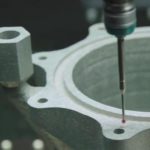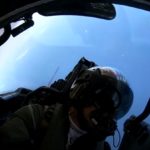Senior Aerospace BWT has been designing and manufacturing ultra lightweight low pressure ducting for regional business aircraft, rotorcraft and military across the globe for the past 30-40 years.
The company had been on the aviation industry’s growth pattern for the past two or three years but as the COVID-19 crisis developed across the globe, the company moved from lightweight duct production for aerospace to solving what was becoming a rapidly pressing issue – the need for vital medical equipment. CEO Darren Butterworth said that as the country moved into 2020, the impact of coronavirus began to spread around the world. BWT has used the government’s furlough scheme to reduce headcount.
Expediting ventilator ducting orders in 72 hours
Butterworth explained how the company made the switch. He said: “The first contribution that we made to the medical response was that we do sell a very small amount of lightweight, flexible ducting into the medical industry and we had some orders that were urgently required for ventilators, so we managed to expedite those in 72 hours.”
“Then we looked at what else was required. Fortunately, in the past two years, we had invested in some new technology, additive manufacturing machines. We invested in a couple of Stratasys FDM machines and the additive manufacturing community globally was looking at what they could do. My team came across a couple of designs that have become available on Open Source, they originated from Sweden.”
The company trialled 3D printing a simple headset and visor and started working with distributors in the Stratasys network. The distributors had contacts with Birmingham University Hospitals and, with the help of consultant, Stephen Edmondson was adapted for NHS use. The company also sought help from car manufacturer Bentley to utilise their machines for PPE manufacture.
BWT distributes 2,000 units of PPE free of charge
BWT contacted GP surgeries via social media and the word spread fast. Today, BWT is distributing about 2,000 units free of charge to hospitals, GP surgeries, and NHS care homes, those sorts of establishments.
Printing vital medical equipment has been a useful lesson for BWT, as Butterworth explains: “Additive manufacturing is a great technology for prototyping, but it’s never going to meet the volumes required.”
The company looked to its supply chain to ramp up production and purchased an injection moulding tool and now produces volumes of 50,000 units a week. Within the supply chain, BWT has dedicated, dedicated companies concentrating on injection moulding within its supply chain and has purchased tools which fit their machines so they can produce headsets which are shipped back to BWT so they can be distributed.
Additive manufacturing is still in its infancy within aerospace sector
Butterworth believes additive manufacturing is still at the start of its journey within the aerospace sector with many approvals and controls required around the process.
The company has a project this year, which was intended to be its launch project which will require the manufacture of several hundred parts. Butterworth said he didn’t think the actions taken by the aerospace sector to help product medical supplies would influence the speed and adoption of the technology. He explained: “I think we’re at the start, I’m not sure this crisis is going to change the speed or, or the end journey for additive manufacturing aerospace. I think that’s going to happen naturally, is going to find its own journey.”
Switch to medical production during pandemic creates sense of pride
Butterworth reports a sense of pride among the staff for turning their effort towards manufacturing vital medical supplies: “I think, first and foremost, are extremely proud that the company is adding value and helping this effort against the COVID-19 virus. A lot of the contacts that we’ve had, a lot of the units that we’ve given free of charge to local GP surgeries have come because employees’ relatives work there. So we’ve got a number today where employees are taking hundred visors to local ambulance services where their niece their nephew, or their daughter works there. And, the feedback and the thanks that you get is sort of off the scale. They feel that they’re really contributing -so it’s great to be part of that.”

